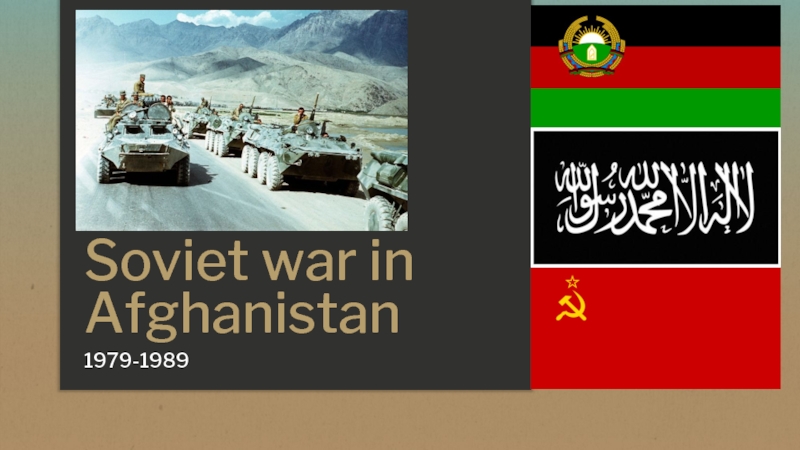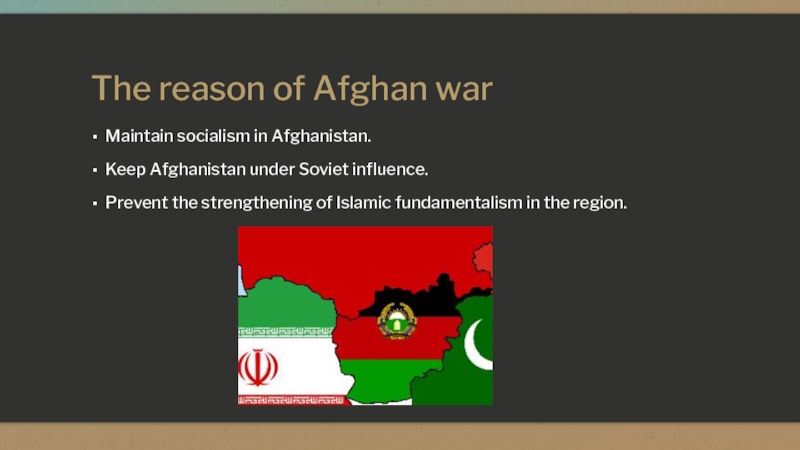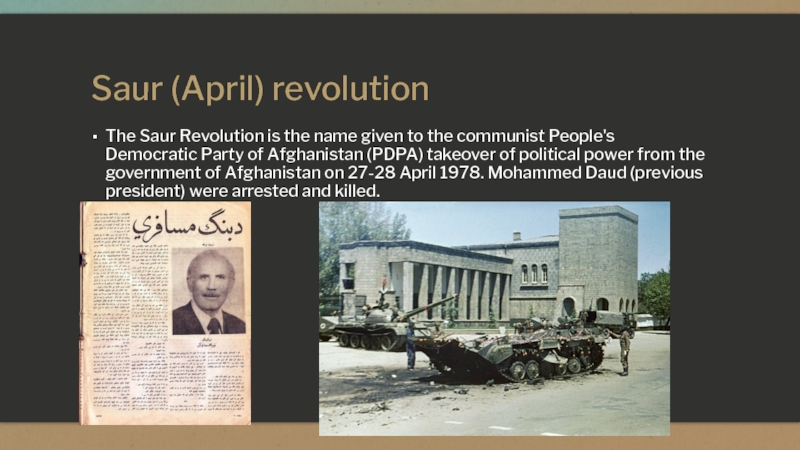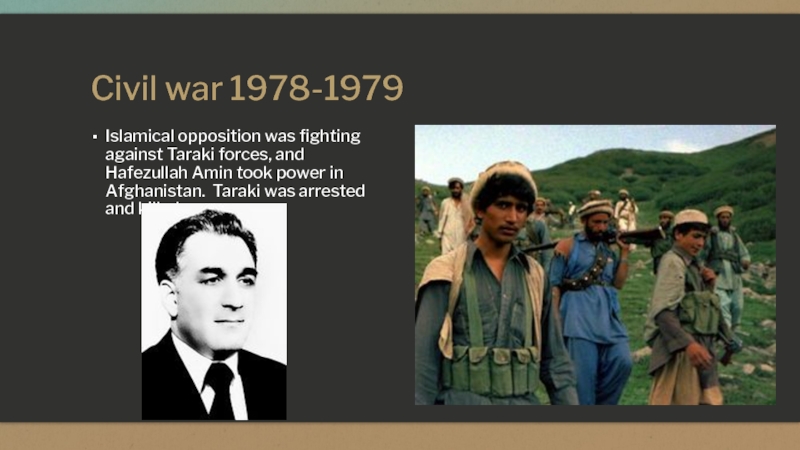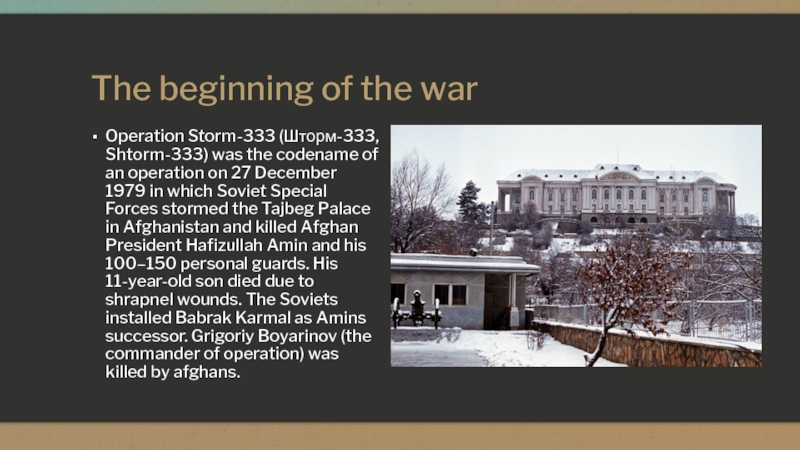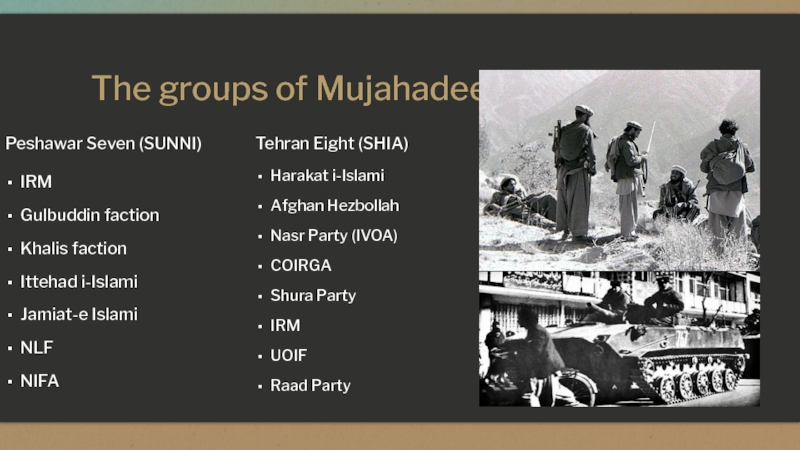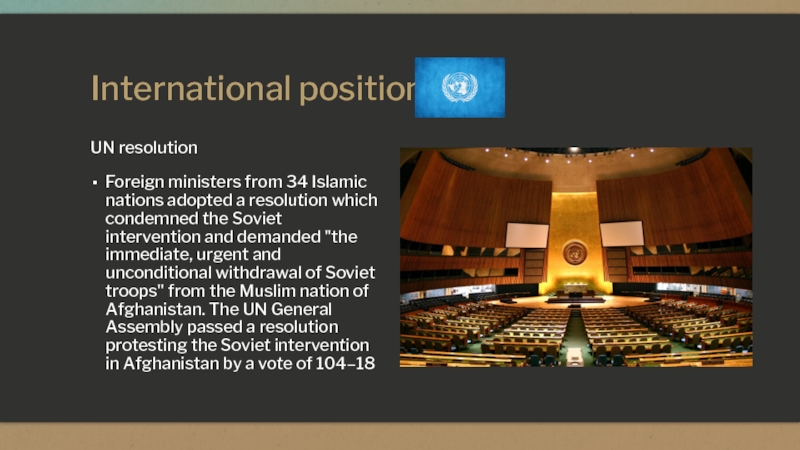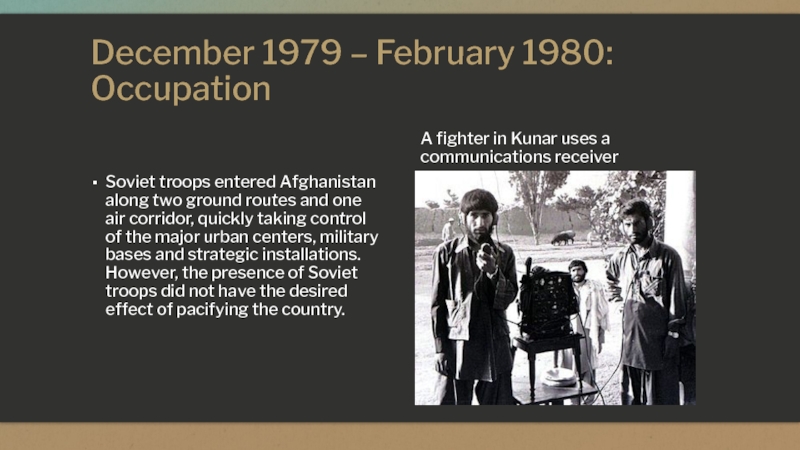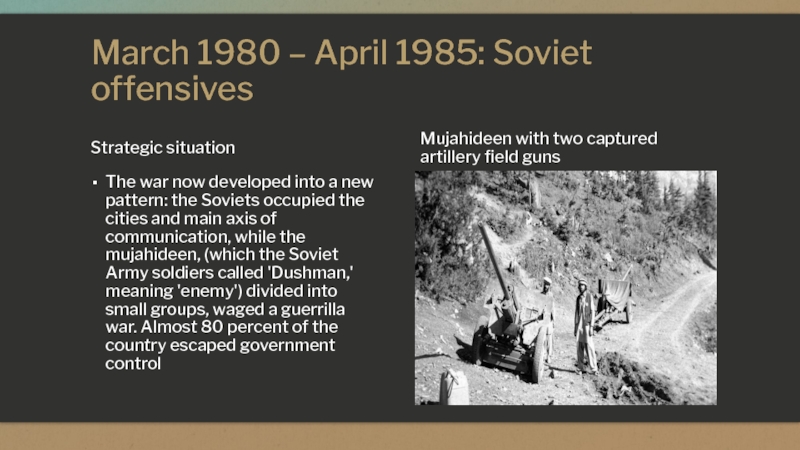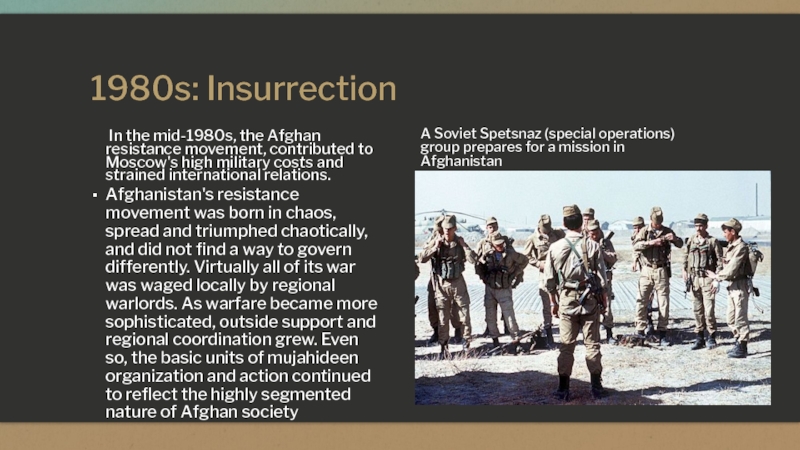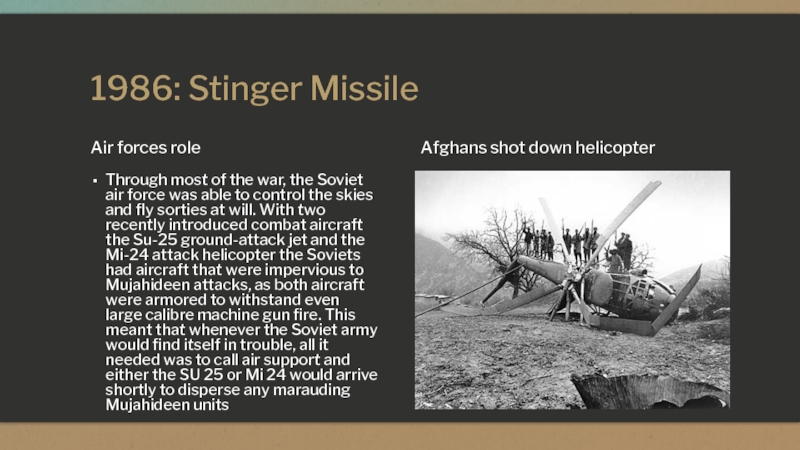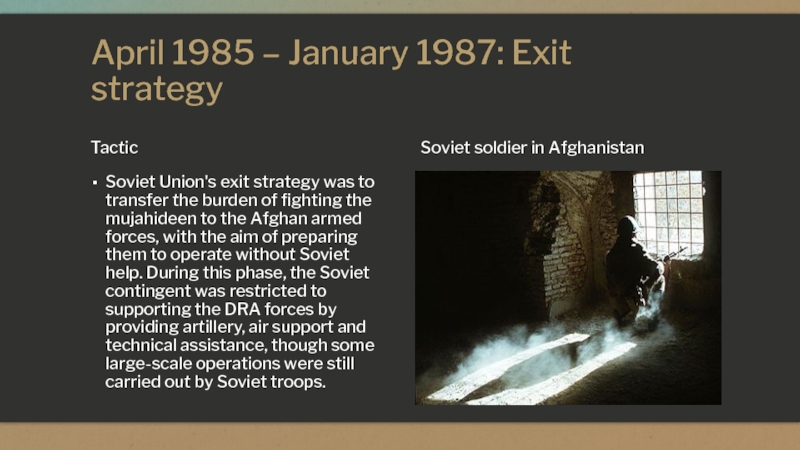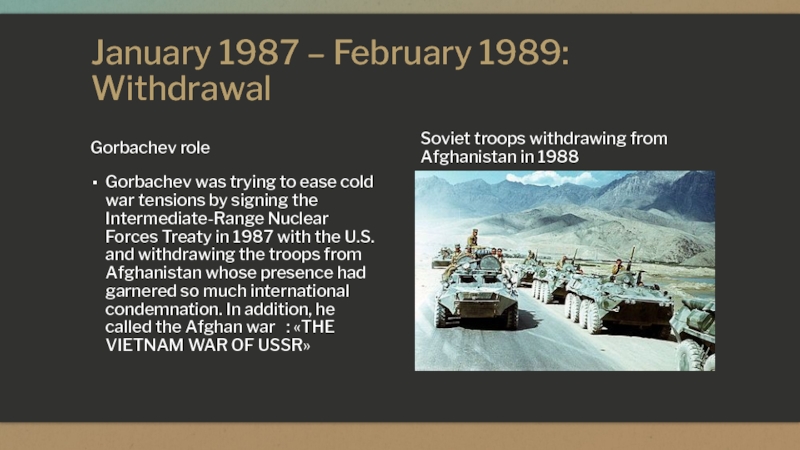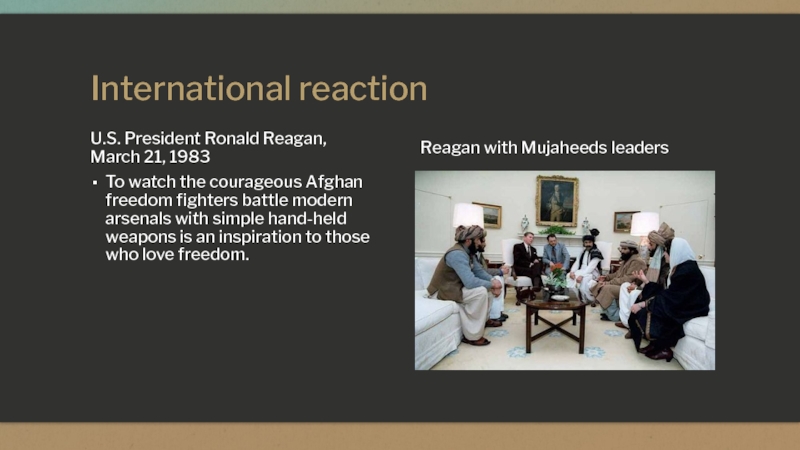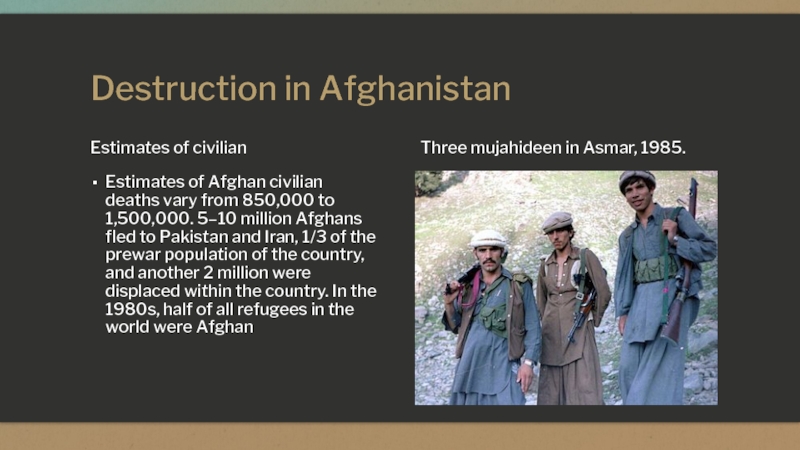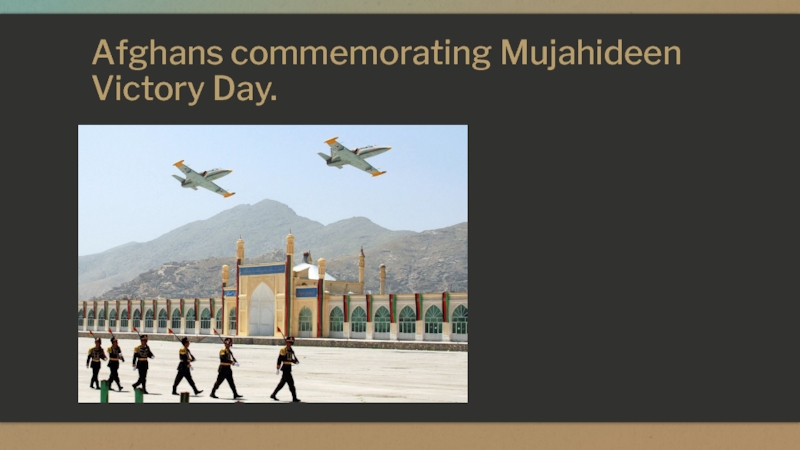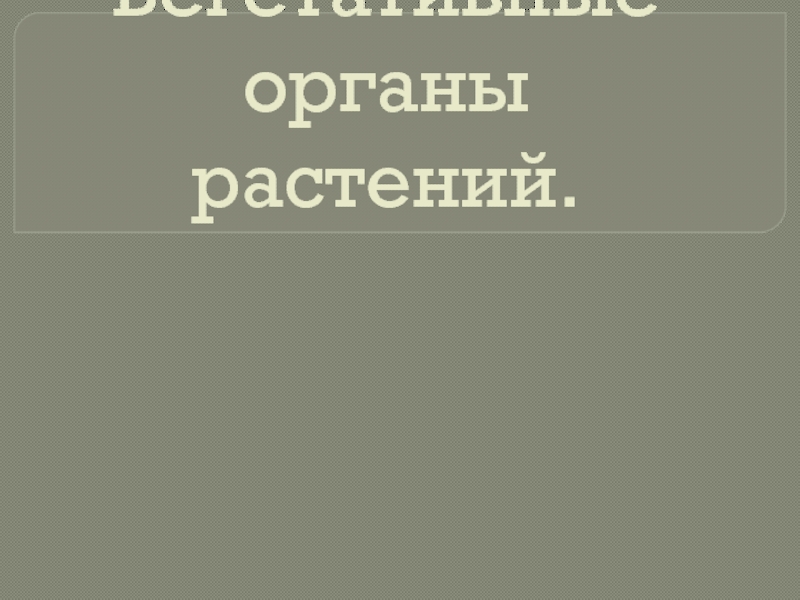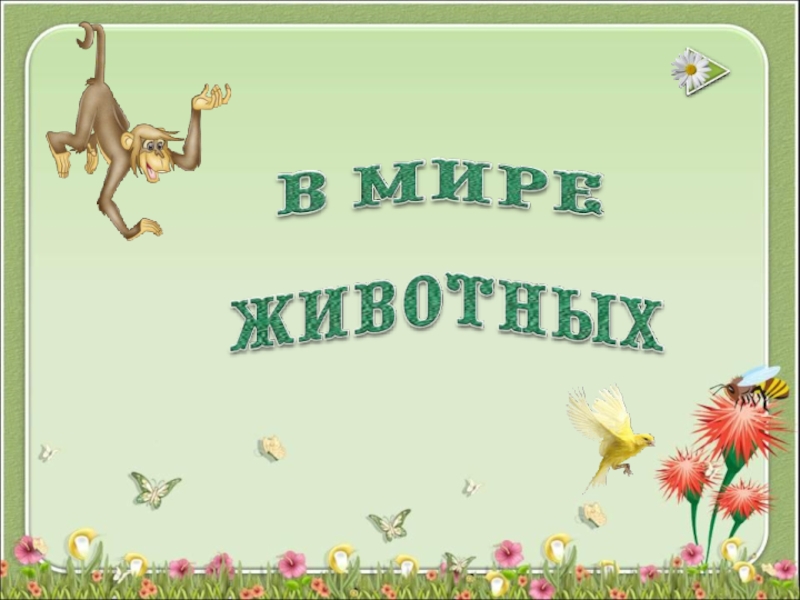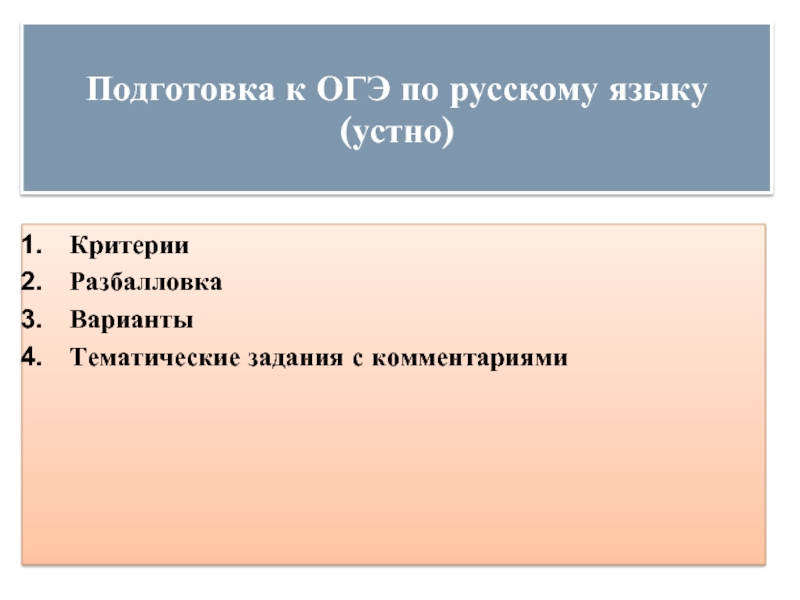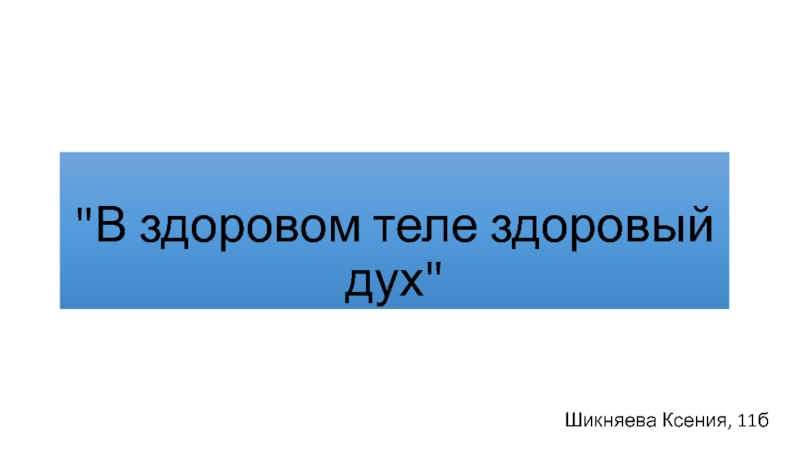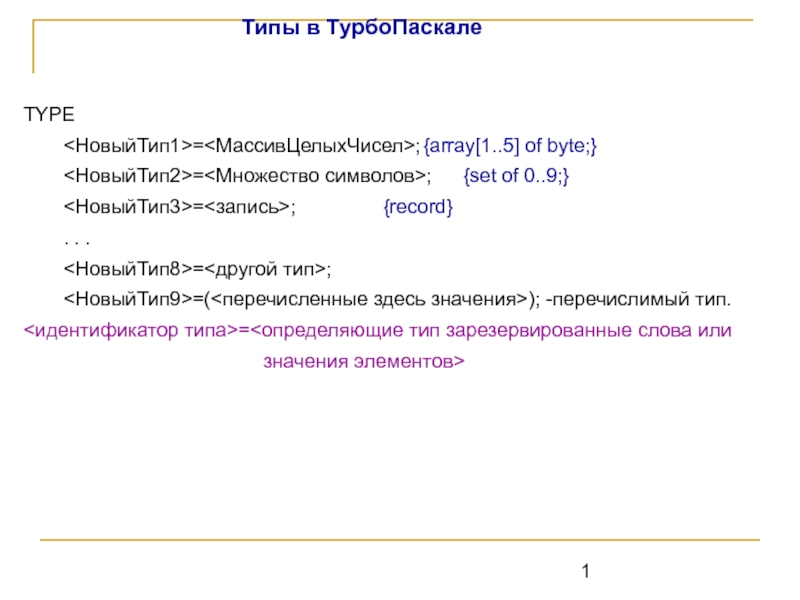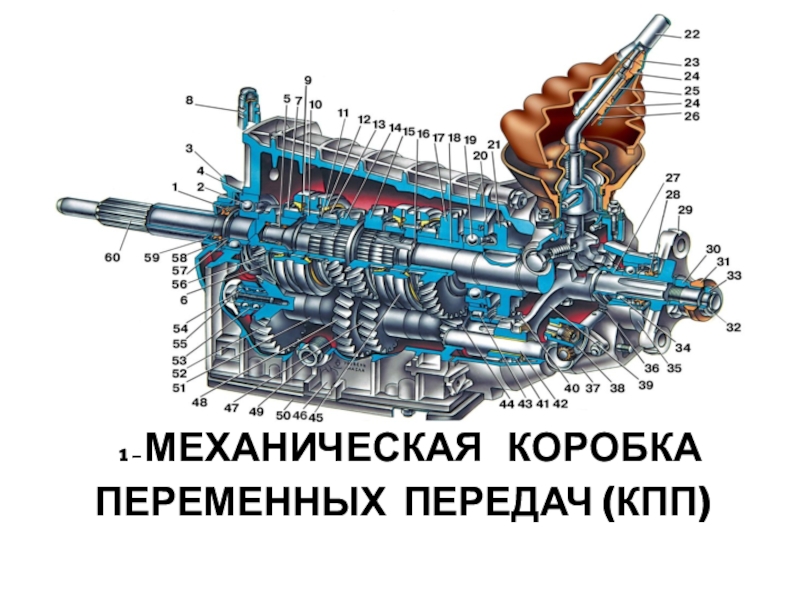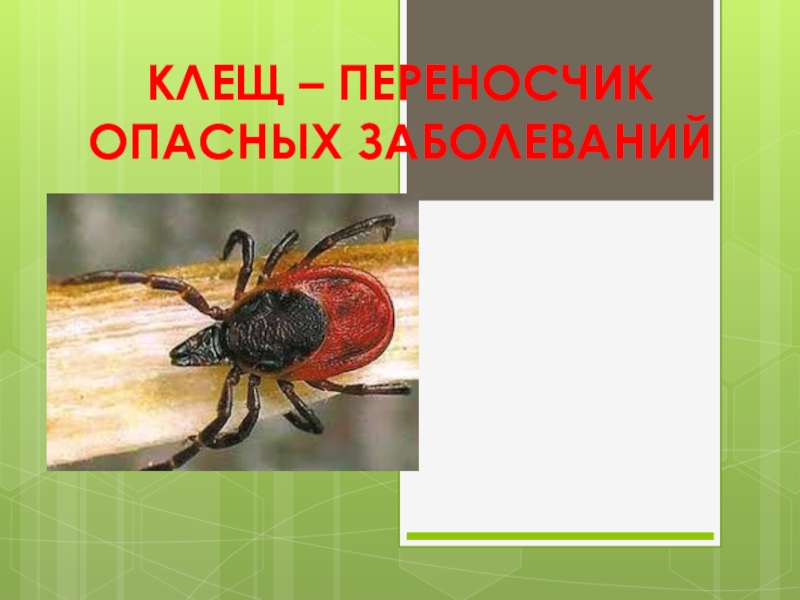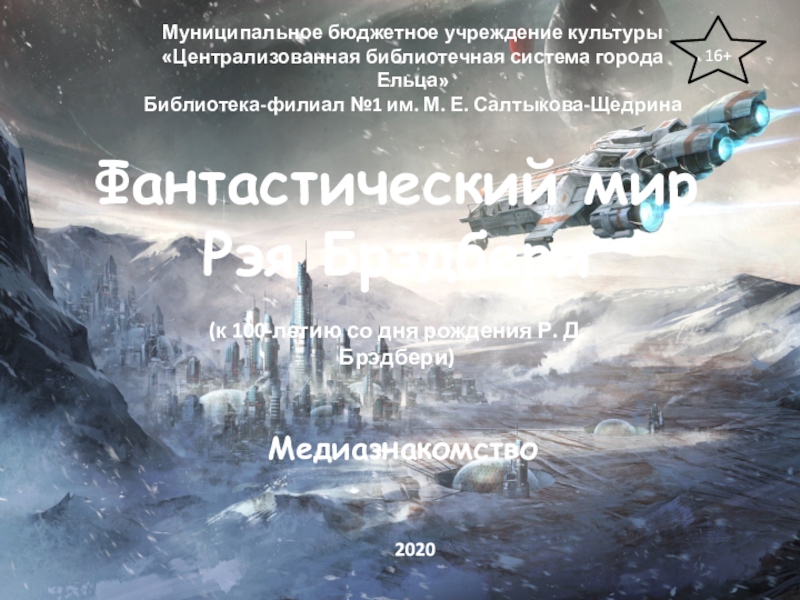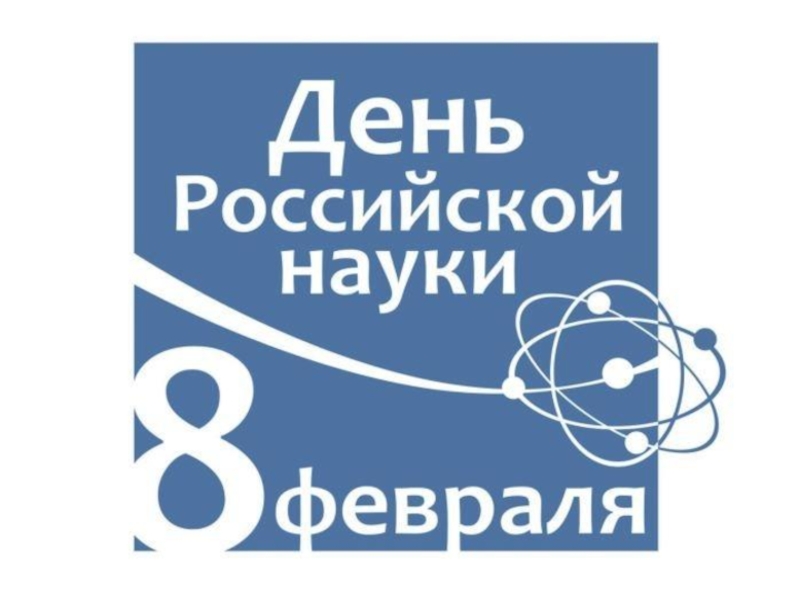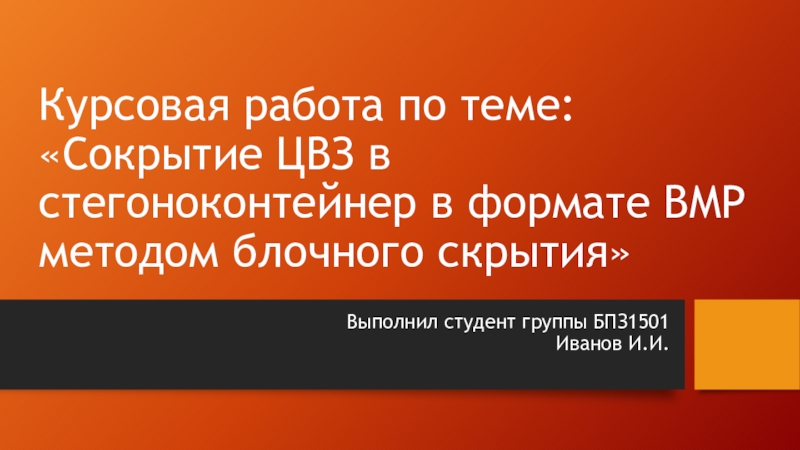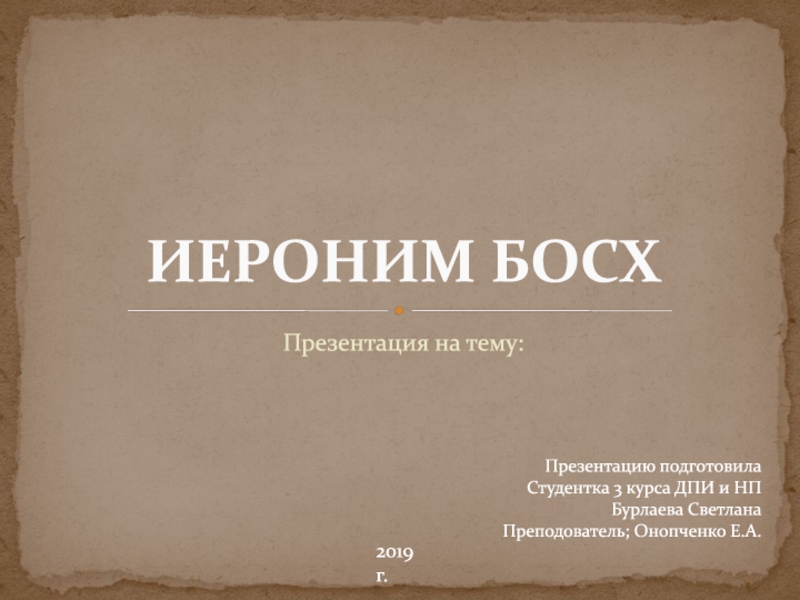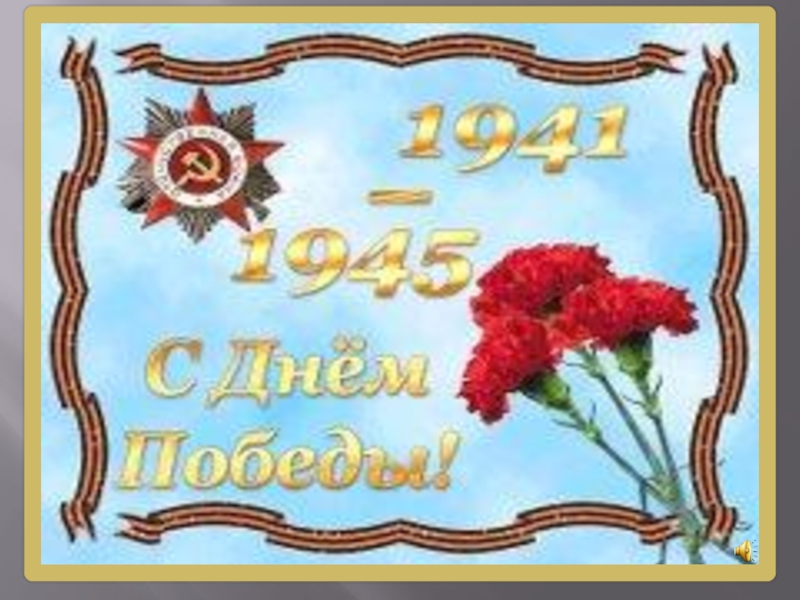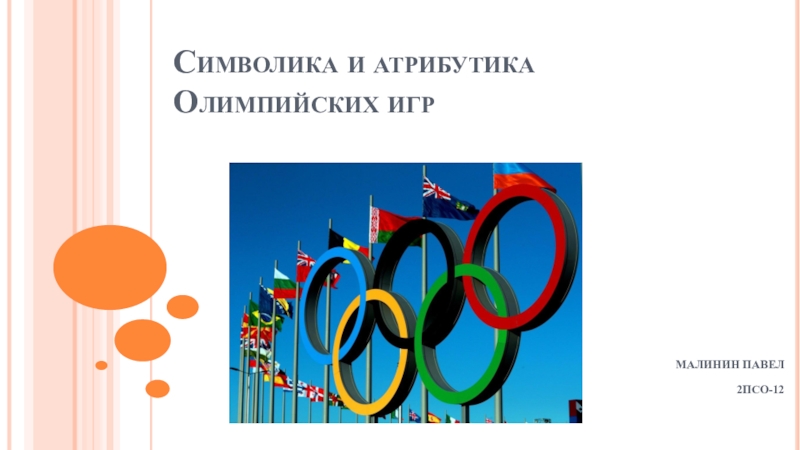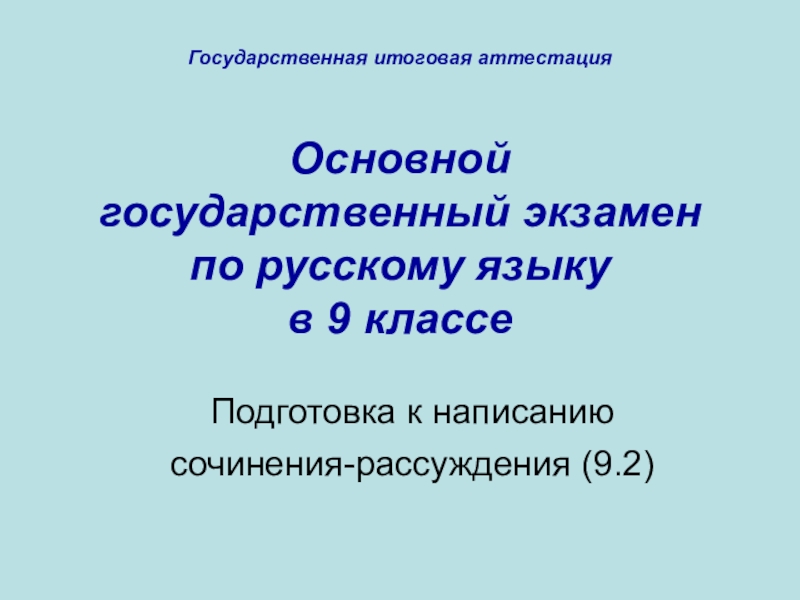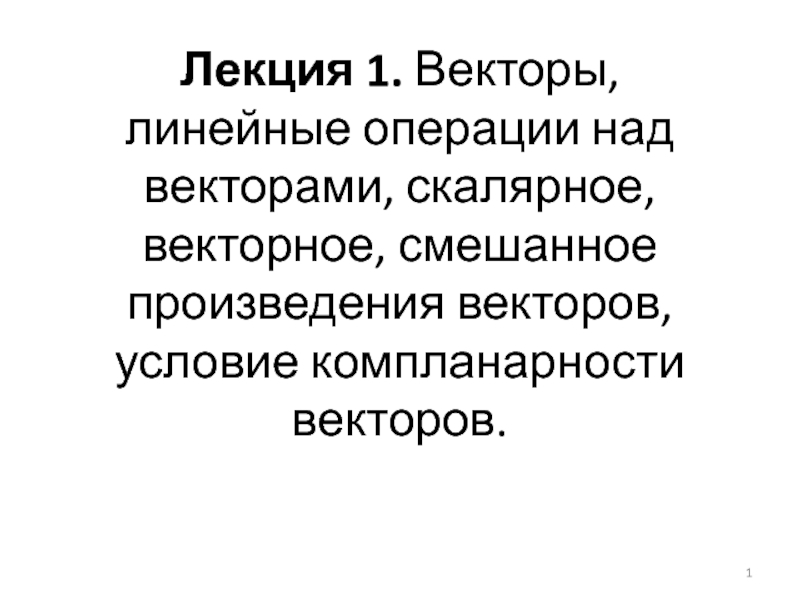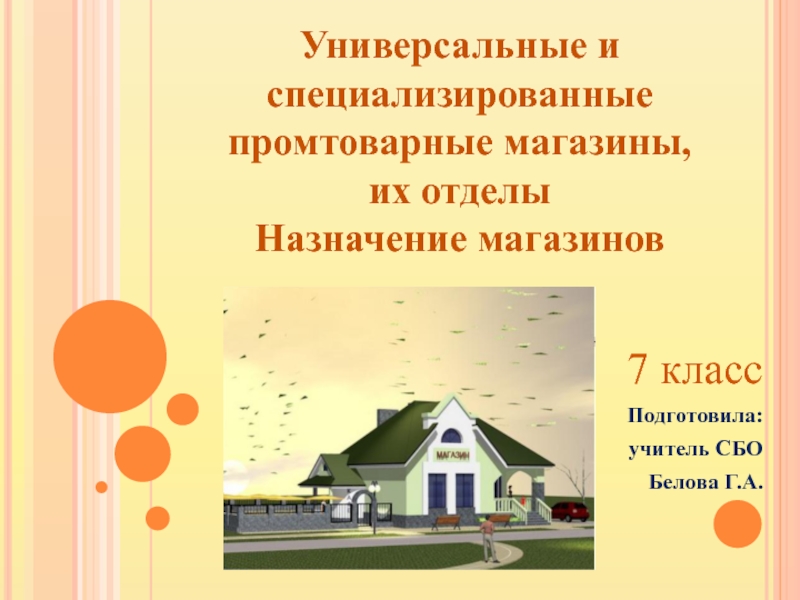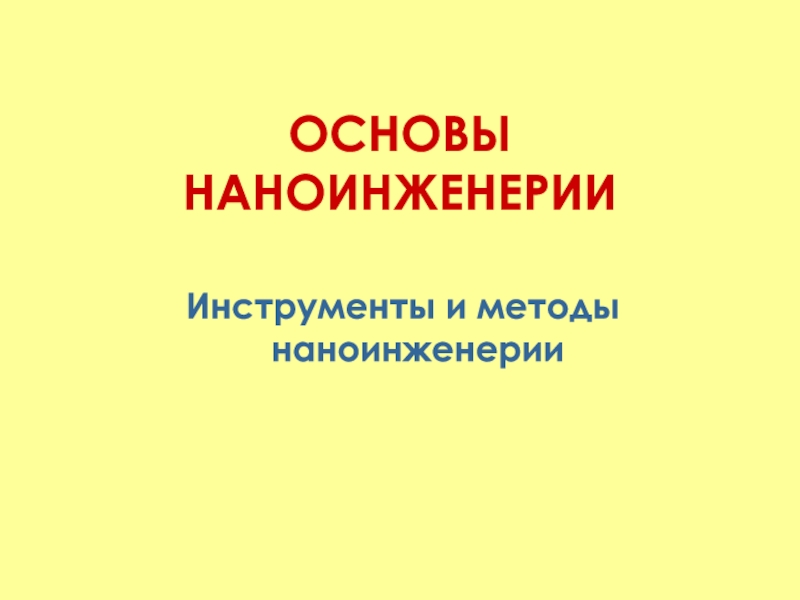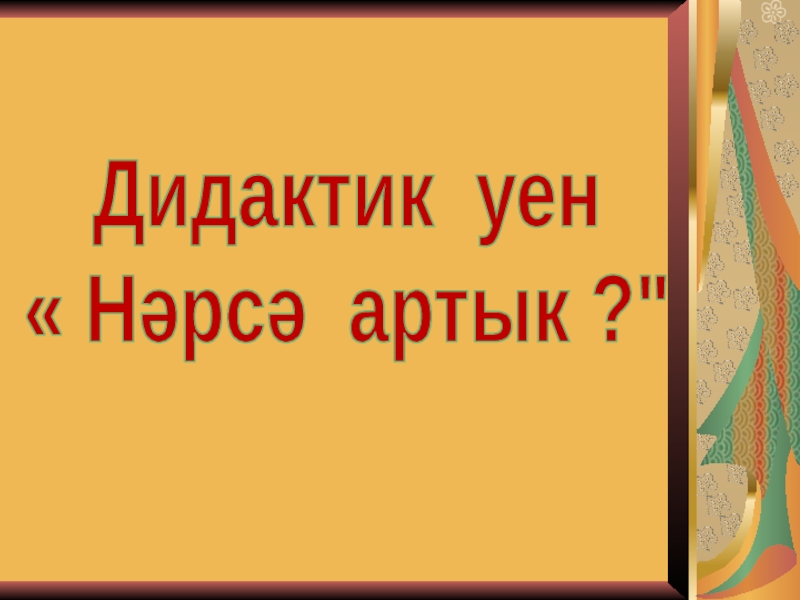Разделы презентаций
- Разное
- Английский язык
- Астрономия
- Алгебра
- Биология
- География
- Геометрия
- Детские презентации
- Информатика
- История
- Литература
- Математика
- Медицина
- Менеджмент
- Музыка
- МХК
- Немецкий язык
- ОБЖ
- Обществознание
- Окружающий мир
- Педагогика
- Русский язык
- Технология
- Физика
- Философия
- Химия
- Шаблоны, картинки для презентаций
- Экология
- Экономика
- Юриспруденция
Soviet war in Afghanistan
Содержание
- 1. Soviet war in Afghanistan
- 2. The reason of Afghan war Maintain socialism
- 3. Saur (April) revolutionThe Saur Revolution is the
- 4. Civil war 1978-1979Islamical opposition was fighting against
- 5. The beginning of the war Operation Storm-333
- 6. The groups of MujahadeenPeshawar Seven (SUNNI)IRMGulbuddin factionKhalis
- 7. International positionsUN resolutionForeign ministers from 34 Islamic
- 8. December 1979 – February 1980: OccupationSoviet troops
- 9. March 1980 – April 1985: Soviet offensivesStrategic
- 10. 1980s: Insurrection In the mid-1980s, the Afghan
- 11. 1986: Stinger MissileAir forces role Through most
- 12. April 1985 – January 1987: Exit strategyTacticSoviet
- 13. January 1987 – February 1989: WithdrawalGorbachev roleGorbachev
- 14. International reactionU.S. President Ronald Reagan, March 21,
- 15. Destruction in AfghanistanEstimates of civilianEstimates of Afghan
- 16. Afghans commemorating Mujahideen Victory Day.
- 17. Скачать презентанцию
Слайды и текст этой презентации
Слайд 2The reason of Afghan war
Maintain socialism in Afghanistan.
Keep
Afghanistan under Soviet influence.
in the region.Слайд 3Saur (April) revolution
The Saur Revolution is the name given to
the communist People's Democratic Party of Afghanistan (PDPA) takeover of
political power from the government of Afghanistan on 27-28 April 1978. Mohammed Daud (previous president) were arrested and killed.Слайд 4Civil war 1978-1979
Islamical opposition was fighting against Taraki forces, and
Hafezullah Amin took power in Afghanistan. Taraki was arrested and
killed.Слайд 5The beginning of the war
Operation Storm-333 (Шторм-333, Shtorm-333) was
the codename of an operation on 27 December 1979 in
which Soviet Special Forces stormed the Tajbeg Palace in Afghanistan and killed Afghan President Hafizullah Amin and his 100–150 personal guards. His 11-year-old son died due to shrapnel wounds. The Soviets installed Babrak Karmal as Amins successor. Grigoriy Boyarinov (the commander of operation) was killed by afghans.Слайд 6The groups of Mujahadeen
Peshawar Seven (SUNNI)
IRM
Gulbuddin faction
Khalis faction
Ittehad i-Islami
Jamiat-e Islami
NLF
NIFA
Tehran
Eight (SHIA)
Harakat i-Islami
Afghan Hezbollah
Nasr Party (IVOA)
COIRGA
Shura Party
IRM
UOIF
Raad Party
Слайд 7International positions
UN resolution
Foreign ministers from 34 Islamic nations adopted a
resolution which condemned the Soviet intervention and demanded "the immediate,
urgent and unconditional withdrawal of Soviet troops" from the Muslim nation of Afghanistan. The UN General Assembly passed a resolution protesting the Soviet intervention in Afghanistan by a vote of 104–18Слайд 8December 1979 – February 1980: Occupation
Soviet troops entered Afghanistan along
two ground routes and one air corridor, quickly taking control
of the major urban centers, military bases and strategic installations. However, the presence of Soviet troops did not have the desired effect of pacifying the country.A fighter in Kunar uses a communications receiver
Слайд 9March 1980 – April 1985: Soviet offensives
Strategic situation
The war now
developed into a new pattern: the Soviets occupied the cities
and main axis of communication, while the mujahideen, (which the Soviet Army soldiers called 'Dushman,' meaning 'enemy') divided into small groups, waged a guerrilla war. Almost 80 percent of the country escaped government controlMujahideen with two captured artillery field guns
Слайд 101980s: Insurrection
In the mid-1980s, the Afghan resistance movement, contributed
to Moscow's high military costs and strained international relations.
Afghanistan's resistance
movement was born in chaos, spread and triumphed chaotically, and did not find a way to govern differently. Virtually all of its war was waged locally by regional warlords. As warfare became more sophisticated, outside support and regional coordination grew. Even so, the basic units of mujahideen organization and action continued to reflect the highly segmented nature of Afghan societyA Soviet Spetsnaz (special operations) group prepares for a mission in Afghanistan
Слайд 111986: Stinger Missile
Air forces role
Through most of the war,
the Soviet air force was able to control the skies
and fly sorties at will. With two recently introduced combat aircraft the Su-25 ground-attack jet and the Mi-24 attack helicopter the Soviets had aircraft that were impervious to Mujahideen attacks, as both aircraft were armored to withstand even large calibre machine gun fire. This meant that whenever the Soviet army would find itself in trouble, all it needed was to call air support and either the SU 25 or Mi 24 would arrive shortly to disperse any marauding Mujahideen unitsAfghans shot down helicopter
Слайд 12April 1985 – January 1987: Exit strategy
Tactic
Soviet Union's exit strategy
was to transfer the burden of fighting the mujahideen to
the Afghan armed forces, with the aim of preparing them to operate without Soviet help. During this phase, the Soviet contingent was restricted to supporting the DRA forces by providing artillery, air support and technical assistance, though some large-scale operations were still carried out by Soviet troops.Soviet soldier in Afghanistan
Слайд 13January 1987 – February 1989: Withdrawal
Gorbachev role
Gorbachev was trying to
ease cold war tensions by signing the Intermediate-Range Nuclear Forces
Treaty in 1987 with the U.S. and withdrawing the troops from Afghanistan whose presence had garnered so much international condemnation. In addition, he called the Afghan war : «THE VIETNAM WAR OF USSR»Soviet troops withdrawing from Afghanistan in 1988
Слайд 14International reaction
U.S. President Ronald Reagan, March 21, 1983
To watch the
courageous Afghan freedom fighters battle modern arsenals with simple hand-held
weapons is an inspiration to those who love freedom.Reagan with Mujaheeds leaders
Слайд 15Destruction in Afghanistan
Estimates of civilian
Estimates of Afghan civilian deaths vary
from 850,000 to 1,500,000. 5–10 million Afghans fled to Pakistan
and Iran, 1/3 of the prewar population of the country, and another 2 million were displaced within the country. In the 1980s, half of all refugees in the world were AfghanThree mujahideen in Asmar, 1985.
